An Overview of Full-Chain Games: A Castle in the Air or an Oasis in the Desert?
Compilation: TechFlow Research
Author: David
In the world of cryptocurrency, GameFi is experiencing a downturn, and people's attention to it has diminished. However, the recent concept of on-chain games has begun to attract more attention and discussion, seemingly bringing a glimmer of new life.
On-chain games are a form of gaming that is closely integrated with blockchain technology. Does their emergence signify a new oasis in the desert?
This article will delve into the technical features, use cases, current challenges, and future prospects of on-chain games, revealing their potential and possibilities, as well as their impact on the gaming industry and players.
On-Chain vs. "Half" Chain
Before everything begins, it's important to have a clear definition.
When I hear the term on-chain games, my first reaction is, "What are 'half' chain games?" Or how do traditional games interact with blockchain differently?
Following this line of thought, we can make a distinction:
- Off-Chain Games:
These are traditional fully off-chain games. They refer to games where the core logic, rules, and interaction processes are entirely executed on the game company's servers, while the game assets and virtual items owned by players exist only in the centralized server's database. In this model, the game company has absolute control and ownership of the data.
- Half-Chain Games:
Early blockchain games addressed the issue of virtual item ownership in traditional games by recording the ownership of game assets and virtual items on the blockchain. However, the core logic and interaction processes of the game remain centralized, relying on centralized servers for computation and processing.
- On-Chain Games:
A new form of gaming that combines blockchain technology and decentralization features. In on-chain games, the core logic, rules, and interaction processes are entirely executed on the blockchain, using smart contracts to implement and verify game rules. At the same time, game assets and virtual items also exist in blockchain form, allowing players to directly own, trade, and transfer these assets without relying on the centralized servers of the game company.
A simple comparison of the three is as follows:
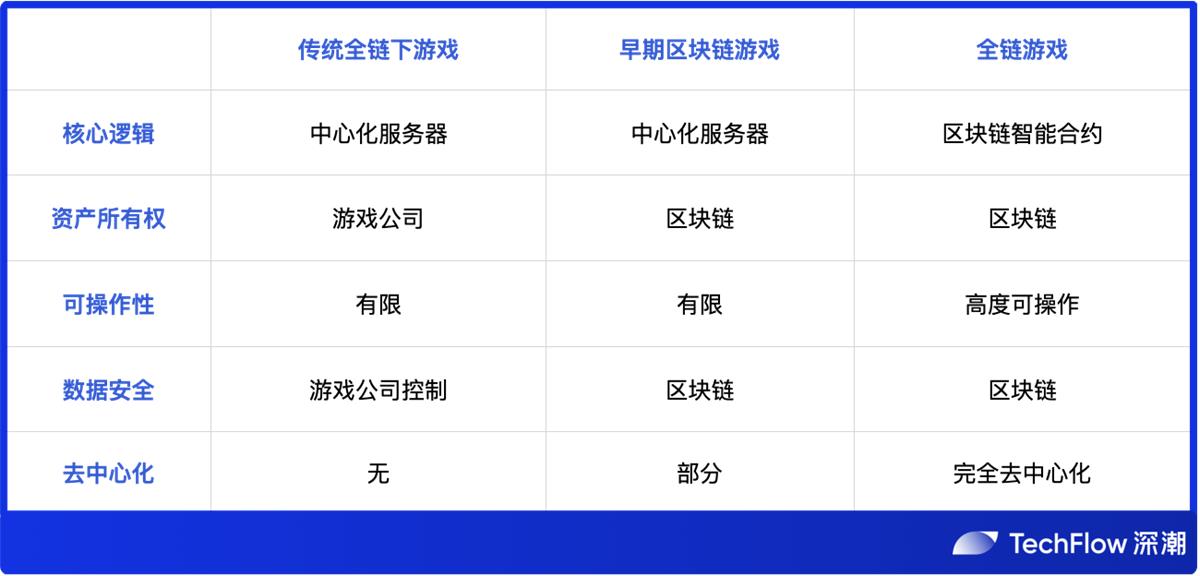
It can be seen that the three differ in terms of core logic, asset ownership, operability, data security, and decentralization. On-chain games achieve true decentralization by recording both core logic and assets on the blockchain, providing players with greater autonomy and security.
(Note: The above does not consider whether game art resources are stored on-chain. Generally, these resources are not on-chain or are solved through decentralized storage.)
Auxiliary Pieces for On-Chain Games
Is it really that simple to run with logic and assets on-chain? Although on-chain games store the game's logic and assets on the blockchain, some auxiliary tech stacks and tools are needed to provide a complete functionality and experience.
The need for auxiliary tools arises because the blockchain itself, as a state machine with limited performance or scarce on-chain resources, struggles to handle the redundant call demands of high-frequency interactive scenarios like games.
At ETHDenver held a few months ago, developer William Robinson provided an in-depth summary of some additional auxiliary tools that on-chain games might need, which can be broadly categorized into the following directions.
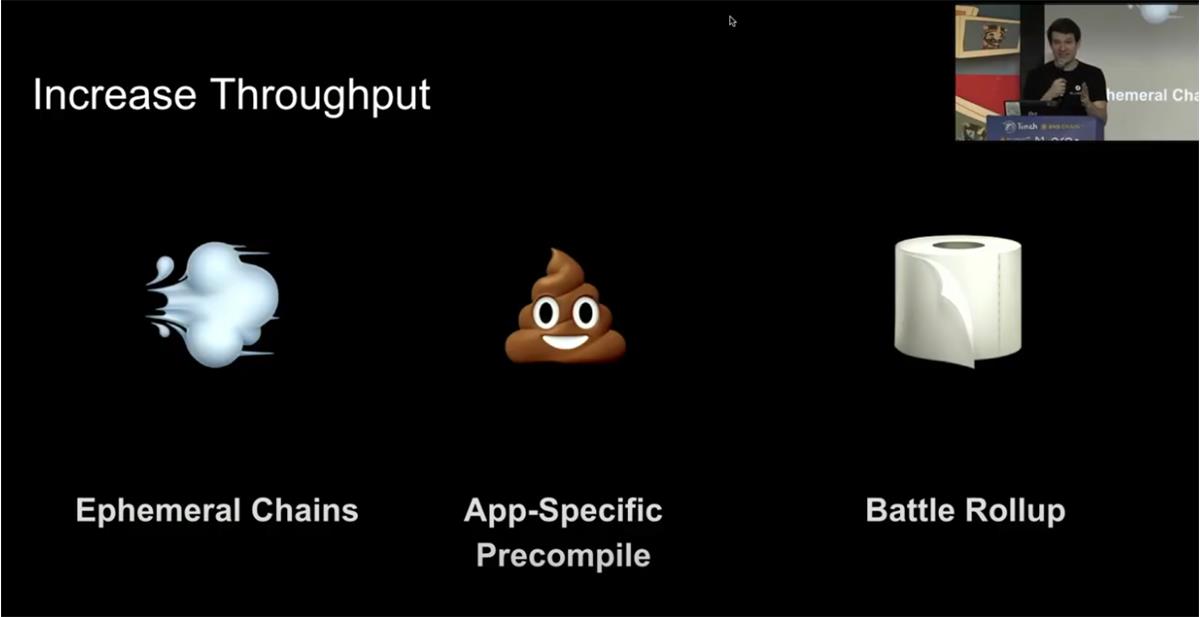
Ephemeral Chain: The ephemeral chain is an important component of on-chain games. It is a temporary blockchain specifically used to handle transient data and computations within the game. By using an ephemeral chain, on-chain games can achieve rapid transaction confirmations and instant state updates, providing a smoother gaming experience.
Once these computations are completed, the ephemeral chain disappears.
App-Specific Precompile: A smart contract precompiler designed for specific application scenarios. In on-chain games, app-specific precompiles can provide certain functionalities and computational capabilities to accelerate the execution speed of game logic and reduce transaction costs. It brings greater scalability and efficiency to on-chain games.
This is similar to the "preloading" principle in traditional games, which simply means preparing resources in advance for retrieval when needed.
Battle Rollup: A technical mechanism used to simplify the combat process in on-chain games. By batch processing and summarizing players' combat actions into a single block, battle rollups can reduce the number of transactions and costs, improving the game's performance and playability.
My understanding is that if you consider an example: "He moved forward 2 steps, backward 3 steps, and to the left 4 steps before knocking down Tom." Perhaps we can summarize the total result of several player movements into a block instead of recording each step.
While this does not achieve true on-chain status, it is similar to how L2 rollups do not fully achieve "complete on-chain."
Engine for On-Chain Games: The on-chain game engine is a tool specifically developed for on-chain games. It provides a set of development frameworks and tools to help developers build game logic and interaction functionalities on the blockchain. The on-chain game engine simplifies the development process, offering a rich library of functionalities and tools, enabling developers to create on-chain games more efficiently.
Regarding this, some developers are already experimenting, such as the MUD on-chain game development engine shared by developers at the Ethereum DEVCON conference.
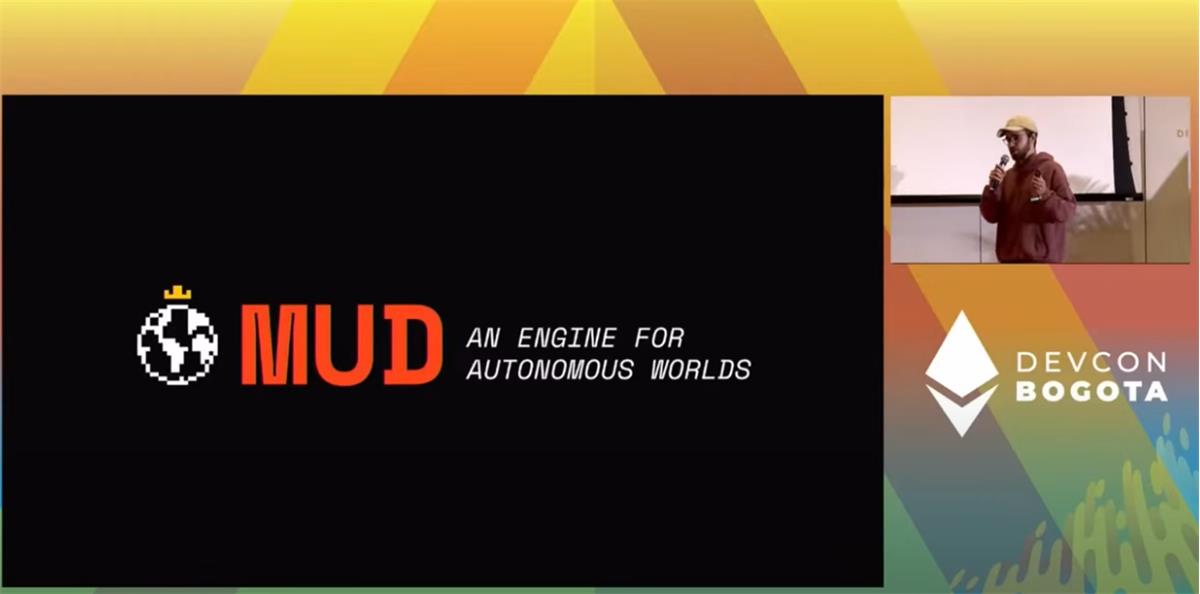
Synchronization Mechanism: In on-chain games, the synchronization mechanism is crucial for ensuring consistency in player operations and states. In traditional games, synchronization is achieved through collaborative mechanisms between the front end and the server. In on-chain games, the synchronization mechanism relies on the blockchain and smart contracts to ensure the synchronization of player operations and states, guaranteeing the fairness and credibility of the game.
The following table can help you quickly understand some tools and mechanisms that need to be paired with on-chain games.
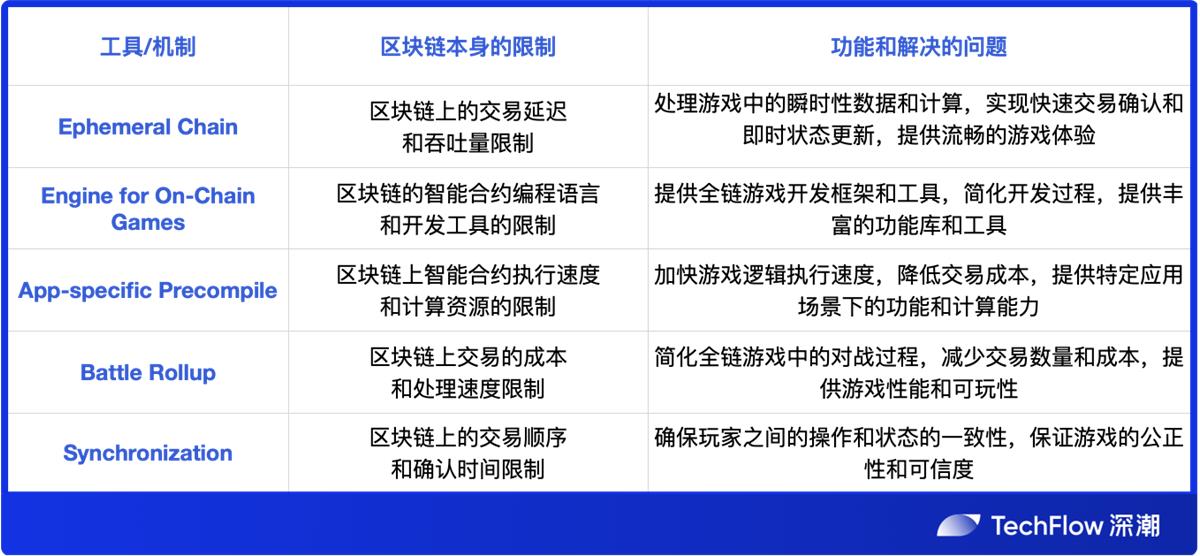
Is It Worth All This Effort to Play a Game?
"I just play for fun, is it really necessary to make gaming like this?" — The player's perspective and the narrative of cryptocurrency clearly have some contradictions.
On-chain games offer freedom, control, and composability. Players can own and control their game assets, no longer constrained by the limitations of centralized gaming platforms, creating unique gaming experiences.
At the same time, they can generate financial returns and economic value more fairly. With all rules and actions on-chain, everything depends on your effort, making this model relatively fair and allowing for economic rewards through gaming, which is clearly more suitable for non-player gold farming groups.
Additionally, emphasizing narrative is far more important than the matter itself. The crypto world has always championed decentralization and anti-authoritarianism, and creating a game that is not controlled by game developers feels like a spiritual banner. More specifically, in on-chain games, you can participate in creating the game's narrative, jointly building the game's worldview and storyline, which also sounds appealing.
Currently, sacrificing convenience, fluidity, and entertainment for an absolutist fairness and control is a concept that not everyone can understand or accept.
To better understand the applicability of on-chain games, we can summarize their advantages and disadvantages along with their target audience in the following table:
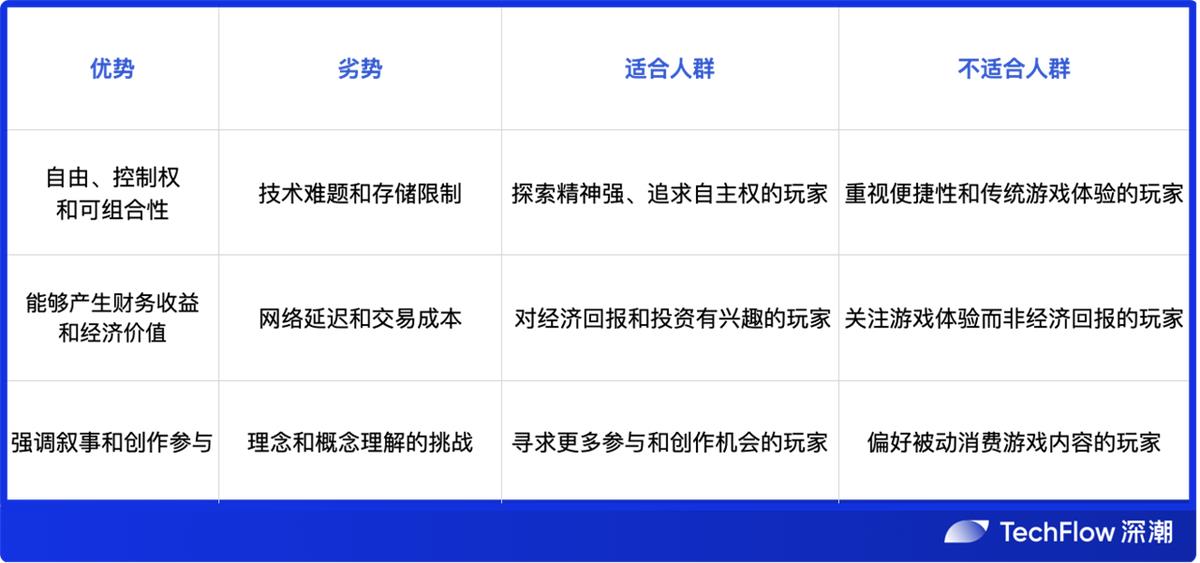
Moreover, in certain game types, the application of on-chain games becomes even more necessary. This is often determined by the inherent rules of the game itself:
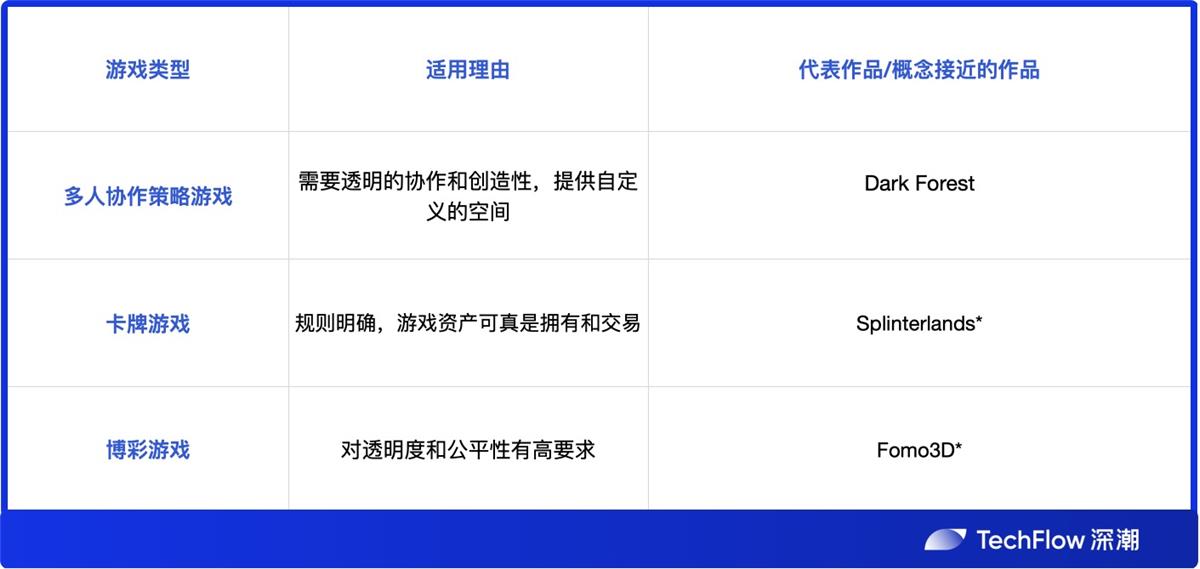
Note: *Indicates that it is not fully on-chain; some logic remains off-chain but has certain similarities.
We have even seen another type of on-chain game in the recent BRC-20 craze: by using H5 mini-games, directly moving game files onto the BTC chain, inscribing them onto the blockchain, and allowing players to play after accessing the relevant webpage.
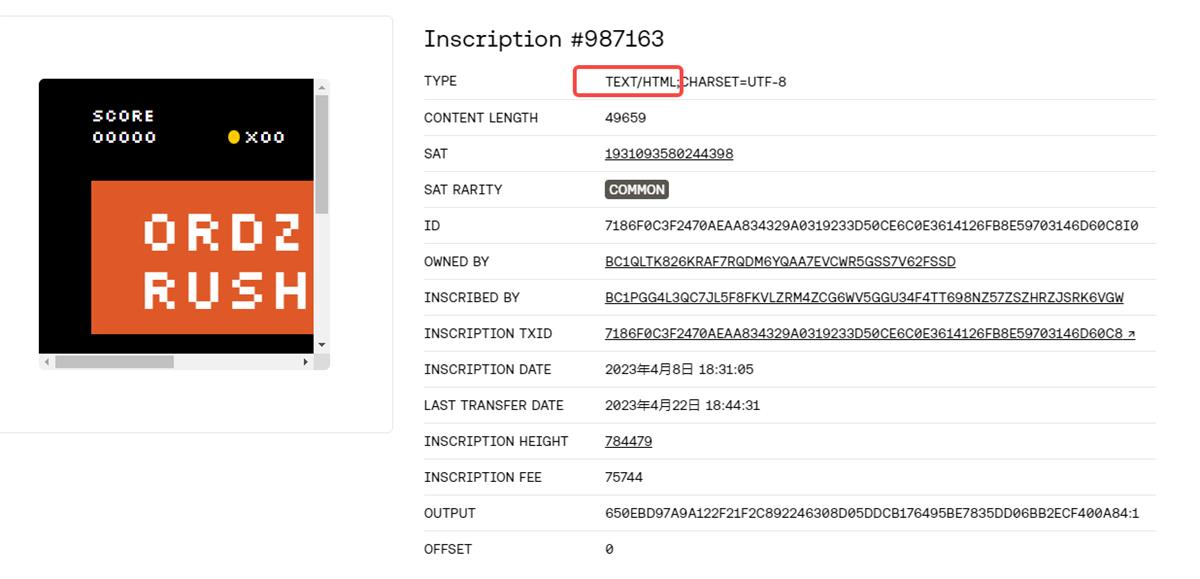
This resembles a "one-time" fully on-chain experience, where players' actions do not need to interact with the chain again. A typical example is @OrdzGames. The games themselves consist of small levels, making them suitable for casual play, aligning with the characteristics of such small-capacity games.
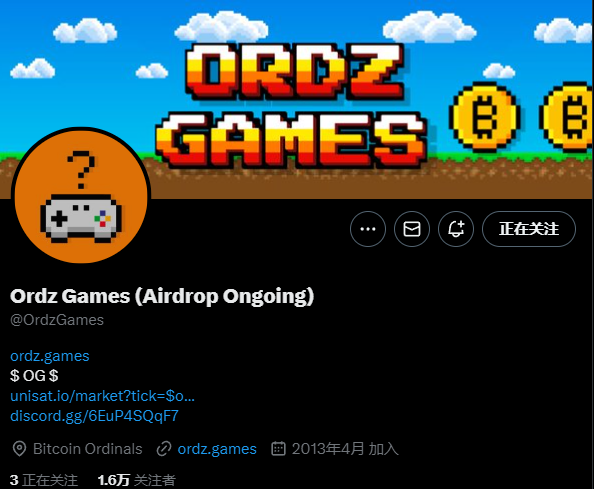
Future
In the future, on-chain games may combine with technologies such as account abstraction, including batch transaction processing, signing, and delegated signing capabilities. This means that some routine operations in games, such as the next 20 steps, may not require signing or can use delegated signing to simplify the process. This integration will bring more efficient interactions and operational experiences to games.
Currently, on-chain games are more of a theoretical and conceptual exploration rather than a commercial driving force. Although they bring new business models and opportunities, whether they can gain acceptance from industry giants still involves many conflicting interests.
On-chain games resemble a disruption starting from the margins, with a beautiful and desirable concept, but not a necessity. Their realization requires overcoming numerous technical and commercial challenges and establishing their position within the existing gaming industry.
However, for those passionate about innovation and pursuing the spirit of decentralization, on-chain games may become a unique and wonderful oasis in the desert.









